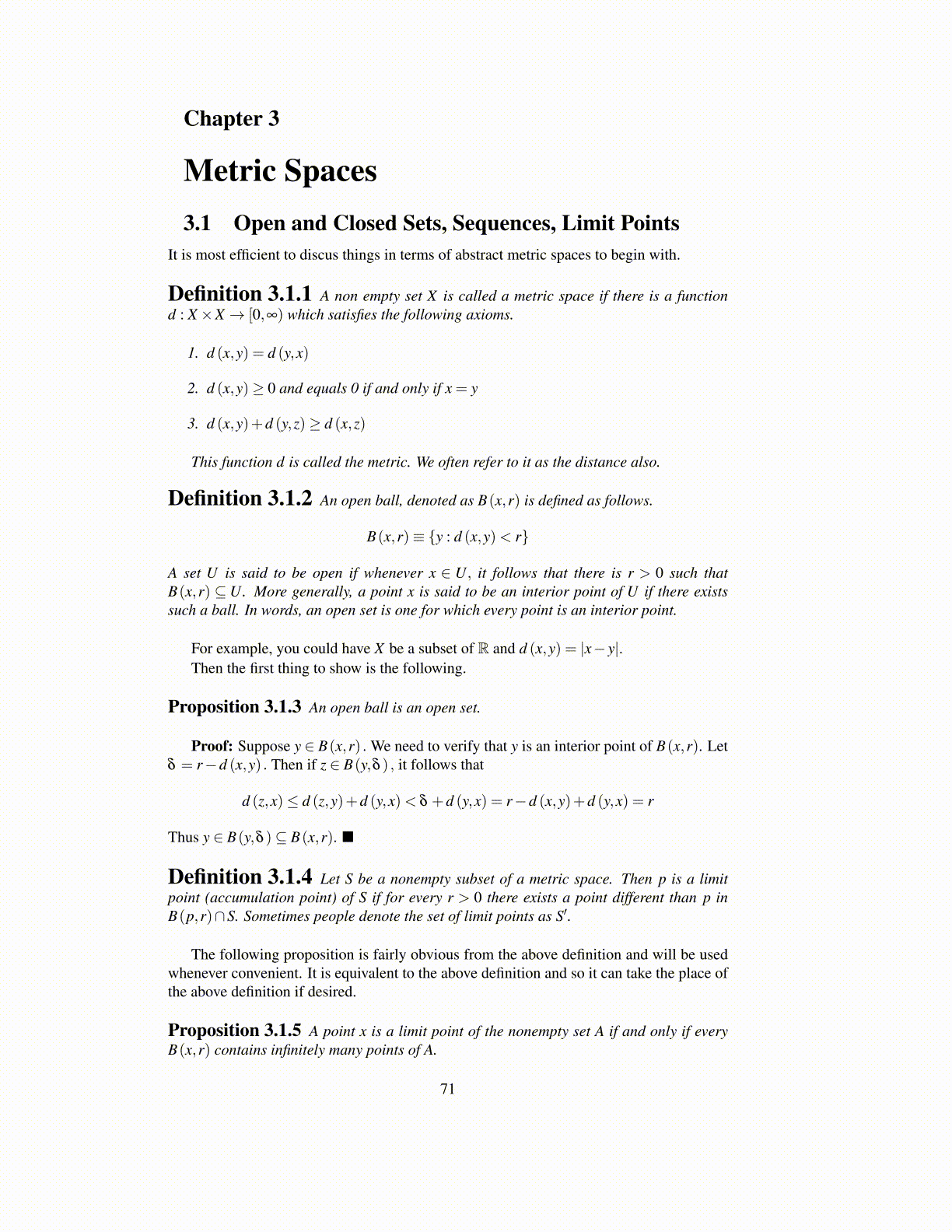
Chapter 3
Metric Spaces3.1 Open and Closed Sets, Sequences, Limit Points
It is most efficient to discus things in terms of abstract metric spaces to begin with.
Definition 3.1.1 A non empty set X is called a metric space if there is a functiond : X×X → [0,∞) which satisfies the following axioms.
1. d (x,y) = d (y,x)
2. d (x,y)≥ 0 and equals 0 if and only if x = y
3. d (x,y)+d (y,z)≥ d (x,z)
This function d is called the metric. We often refer to it as the distance also.
Definition 3.1.2 An open ball, denoted as B(x,r) is defined as follows.
B(x,r)≡ {y : d (x,y)< r}
A set U is said to be open if whenever x ∈ U, it follows that there is r > 0 such thatB(x,r) ⊆U. More generally, a point x is said to be an interior point of U if there existssuch a ball. In words, an open set is one for which every point is an interior point.
For example, you could have X be a subset of R and d (x,y) = |x− y|.Then the first thing to show is the following.
Proposition 3.1.3 An open ball is an open set.
Proof: Suppose y ∈ B(x,r) . We need to verify that y is an interior point of B(x,r). Letδ = r−d (x,y) . Then if z ∈ B(y,δ ) , it follows that
d (z,x)≤ d (z,y)+d (y,x)< δ +d (y,x) = r−d (x,y)+d (y,x) = r
Thus y ∈ B(y,δ )⊆ B(x,r). ■
Definition 3.1.4 Let S be a nonempty subset of a metric space. Then p is a limitpoint (accumulation point) of S if for every r > 0 there exists a point different than p inB(p,r)∩S. Sometimes people denote the set of limit points as S′.
The following proposition is fairly obvious from the above definition and will be usedwhenever convenient. It is equivalent to the above definition and so it can take the place ofthe above definition if desired.
Proposition 3.1.5 A point x is a limit point of the nonempty set A if and only if everyB(x,r) contains infinitely many points of A.
71